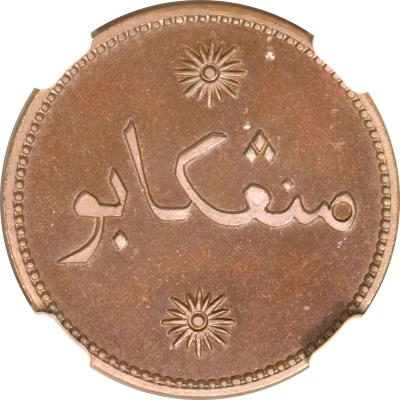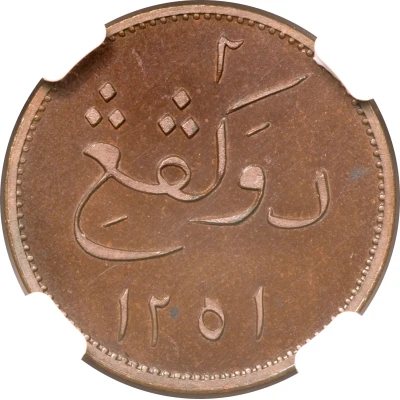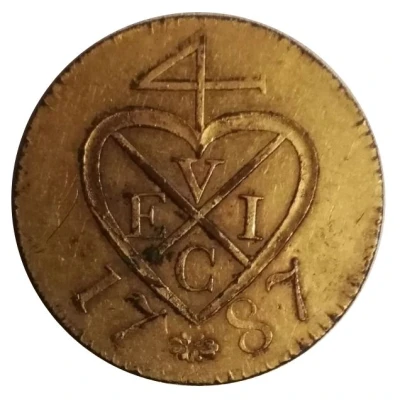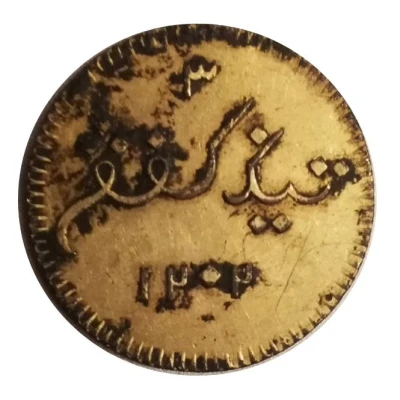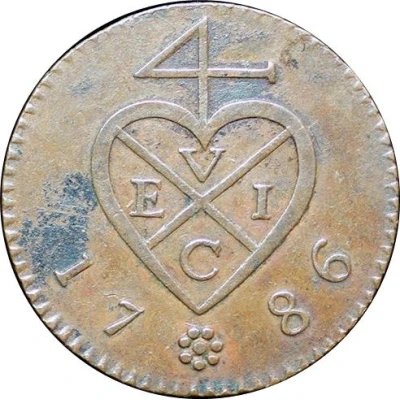
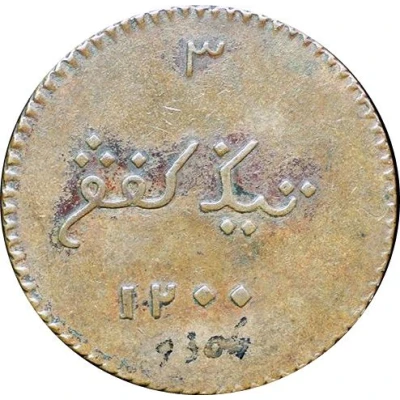

© James Martin
3 Keping
| Copper | 9.48 g | 29 mm |
| Issuer | Sumatra (British East Indies) |
|---|---|
| Type | Standard circulation coin |
| Years | 1200-1202 (1786-1788) |
| Calendar | Islamic (Hijri) |
| Value | 3 Kepings (3⁄400) |
| Currency | Dollar (1783-1824) |
| Composition | Copper |
| Weight | 9.48 g |
| Diameter | 29 mm |
| Thickness | 2 mm |
| Shape | Round |
| Technique | Milled |
| Orientation | Coin alignment ↑↓ |
| Demonetized | Yes |
| Updated | 2024-10-04 |
| Numista | N#320044 |
|---|---|
| Rarity index | 94% |
Reverse
Arabic numbers and Jawi script denomination.
Script: Arabic
Lettering:
۳
تيݢ كفڠ
١٢٠٠
Unabridged legend:
3
Tiga keping
1200
Translation:
Three keping
AH 1200
Engraver: Jean-Pierre Droz
Edge
Reeding slanted right
Comment
The 1, 2 and 3 Kepings were manufactured by Matthew Boulton from 1786; they are significant in the history of coinage, and industry, because they are the first numismatic products that incorporated the use of James Watt's steam engine, the basis of the first Industrial Revolution.Steam was used to pump water back up onto a traditional water driven rolling press that created the copper sheets from ingots. Steam was also used to help cut the planchets, but the coins themselves were made in London using a traditional screw press.
Interesting fact
One interesting fact about the Standard circulation coin 3 Keping 1200-1202 (1786-1788) from Sumatra (British East Indies) made of Copper weighing 9.48 g is that it features a unique blend of Islamic and European design elements. The coin's obverse side bears the image of a crowned lion, a common motif in European heraldry, while the reverse side features an Arabic inscription and a stylized flower, reflecting the Islamic influences present in the region at the time. This blending of cultural styles is a testament to the rich history and diversity of the British East Indies and its currency.
